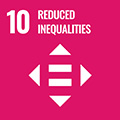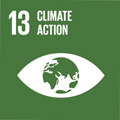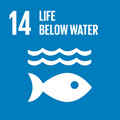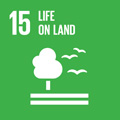- Docente: Stefano Goffredo
- Credits: 6
- SSD: BIO/07
- Language: Italian
- Teaching Mode: In-person learning (entirely or partially)
- Campus: Bologna
-
Corso:
Second cycle degree programme (LM) in
Biodiversity and Evolution (cod. 5824)
Also valid for Second cycle degree programme (LM) in Sciences and Management of Nature (cod. 9257)
Learning outcomes
After completing the course, the student will know how organisms interact, as components of the structure and function of ecosystems, including the consequences of human interactions with the environment in general, and the marine system in particular. They will know the effects of global climate change on key organisms, biodiversity and ecosystems, particularly on marine species, including the effects on human societies and economies . Models and forecasts are presented considering different ocean warming and acidification scenarios predicted by the IPCC (Intergovernmental Panel on Climate Change).
Course contents
1) Conflicts and Security Risks of Climate Change in the Mediterranean Region - Projections and Impacts of Future Climate Change in the Mediterranean; - Impact of Climate Change on Water Supply and Water-Related Conflicts; - Consequences for Food Security; - Population and Migration in the Mediterranean; - Human Security, Environmental Conflict and Climate Adaptation; - Energy Security as Field of Conflict and Cooperation; - Political and Economic Frameworks for Cooperation in the Mediterranean.
2) Socioeconomic Aspects: Human Migrations, Tourism and Fisheries - Introduction; - Coastal Commercial Fisheries and Aquaculture; - Tourism; - Migrations.
3) Ecological and evolutionary considerations regarding corals in a rapidly changing environment - Comments on the Evolution of Corals in the Atlantic Versus the Pacific Oceans; - Climate Change, Changes in the Oceanic Climatic Zones, and Their Effects; - Comments on Evolution of the Immune System in Corals; - Closing Comments.
4) Coral population dynamics - Ecological modes in corals; - Why study population biology?; - How to model population dynamics?; - The introduction of an age-based population dynamics model into coral reef ecology: the Beverton and Holt model; - The case study of mushroom corals at Eilat; - Correlations between demographic characteristics, environmental parameters, and implications with climate change; - Relationships between growth, population structure and sea surface temperature in temperate solitary corals; - What about calcification and temperature?; - What about non-zoox corals?; - Zoox coral versus non-zoox coral; - The Panarea underwater crater: a laboratory for the study of ocean acidification and warming effects; - The ocean acidification; - Calcifiers and ocean acidification; - Coral biomineralization and calcification; - The Panarea transpalnt experiment; - Long term effects of acidification on growth of corals naturally living along a pH gradient
5) General Ecological Aspects of Anthozoan- Symbiodinium Interactions in the Mediterranean Sea - Introduction; - Anthozoan-Dinoflagellate Trophic Relationship: A Costly Mutualism; - Diversity and Ecology of Anthozoan-Symbiodinium Mutualisms in the Mediterranean Sea; Importance of Anthozoan-Symbiodinium Mutualisms for the Health of the Mediterranean Ecosystems and Specific Approaches; - Research Priorities.
6) Corals and light: from energy source to deadly threat - The Bathymetric Distribution of Coral Reefs and Underwater Light; - Zooxanthellae: Providers of Energy; - Photoacclimation of the Zooxanthellae; - Light and Trophic Status of Corals; - Colony Morphology; - Tentacle Expansion; - Light Enhanced Calcification (LEC);- Light and Reproduction; - Conclusions.
7) Professionals based environmental monitoring: freshwater environment
8) Professionals based environmental monitoring: marine environment
9) Citizen science based environmental monitoring - Reliability of data; - Environmental education; - Conservation; - Volunteer involvement in scientific programs; - Marine Citizen Science Programs; - Recreational Citizen Science; - Mass communication
10) Education: Diving techniques to preserve the marine environment; Glocal Education project
Readings/Bibliography
The purchase of specific texts is not necessary. Updated teaching materials will be provided, in English and Italian
Teaching methods
The course consists of 6 credits of frontal lectures
Assessment methods
At the end of the course the student will be tested through an oral examination. The final grade will be given by averaging the scores obtained in three oral questions on the topics the course.
Teaching tools
Teaching materials: teaching material presented in class will be made available to the student in electronic format via internet, at this address: https://virtuale.unibo.it
Links to further information
http://www.marinesciencegroup.org/
Office hours
See the website of Stefano Goffredo
SDGs




This teaching activity contributes to the achievement of the Sustainable Development Goals of the UN 2030 Agenda.
